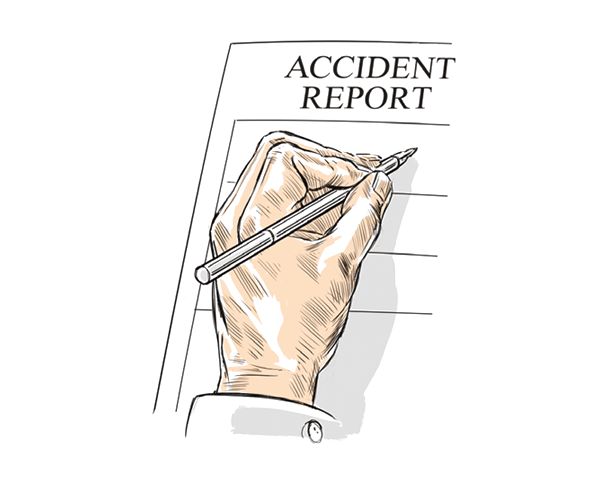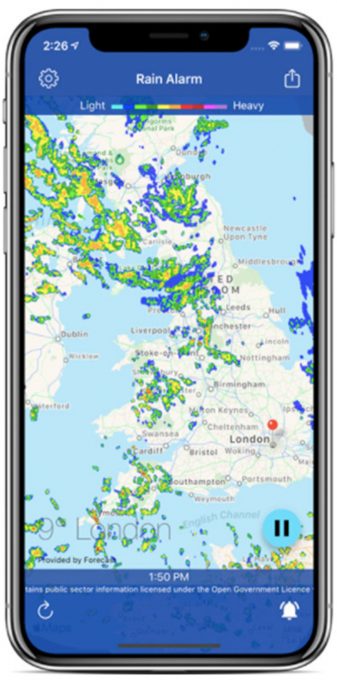If at first you don’t…
Beech 19
N2177W
Somerville, TN
Injuries: Minor
The pilot reported that shortly after take-off the engine ‘shut down’, due to the fuel selector being in the ‘off’ position. Subsequently, he made a forced landing to a field adjacent to the runway.
He moved the fuel selector to the ‘on’ position and then initiated a soft-field take-off.
During the take-off roll the aeroplane collided with an embankment, and it momentarily ascended before landing hard and then coming to rest upright. The nose landing gear separated from the aeroplane and the fuel tanks ruptured. A fire ensued, which consumed the aeroplane.
Comment I must confess to being pretty amazed by this report as I think most of us would have decided we had exhausted our run of luck after the first successful forced landing. But we are, after all, human and prone to ‘umm’ and ‘err’…
Strike one, deer
Symphony Aircraft SA-160
N844SA
Fitzgerald, GA
Injuries: None
The pilot reported that during the landing roll a deer ran across the runway and struck the aeroplane’s right side. The pilot was able to taxi the aircraft to the ramp without further incident. The aeroplane sustained substantial damage to the fuselage aft of the nosewheel.
Strike two, car
Piper PA28
N5776W
Simsbury, CT
Injuries: Minor
The flight instructor reported that while the student pilot was landing, a car drove onto the runway and struck the left wing. Subsequently, the aeroplane nosed over.
“While crossing the runway, he heard glass shatter and felt a heavy impact”
The driver of the car reported that he stopped at the runway entrance and looked left and right to make sure it was clear. While crossing the runway he heard glass shatter and felt a heavy impact. He did not see the aeroplane until after the collision. The aircraft sustained substantial damage to both wings, the fuselage and the empennage.
Strike three, bird
Van’s RV-10
N519RV
Granbury, Tx
Injuries: None
The pilot reported that while in the circuit and turning from base to final, a large bird impacted the leading edge of the right wing, which resulted in substantial damage to the wing structure and made the aircraft difficult to control. The pilot was able to land safely on the intended runway.
One strike too many
Cessna 208
N988FX
Baltimore, MD
Injuries: None
The pilot was conducting an ILS approach in night IMC to the destination airport. He was utilising the autopilot for the approach and disengaged it when he had the runway and airport lighting system in view. As he approached the runway, the pilot heard a sound and thought the aeroplane had hit a bird. He felt the aeroplane pitch up so he increased engine power and pitched down in order to reach the runway. After the pilot landed and taxied to the ramp, he saw that a large piece of an approach light was caught on the aeroplane’s right main landing gear. Further inspection revealed that its empennage, right horizontal stabiliser, right wing strut and front cargo pod were also damaged. The operator reported that the aircraft had struck four separate approach light towers, as well as a localiser antenna.
Comment Hitting things, or in some cases being hit, can, on occasions, be difficult to avoid. However, what happens afterwards is usually within our control.
That said, from personal experience and looking through lots of incident reports it would seem that as pilots we often underestimate the amount of damage that is caused when something collides with our aeroplane.
Which leaves that age old question – should you continue as if nothing has happened? Granted, the car-strike pilot had little choice, but the decision is often more nuanced. Unless on short finals, a slow speed handling check in the overhead, before making an approach at a speed where you know the aircraft is controllable, is usually a sound option. And even when on the ground, discovering what the damage is before taxying back with something that subsequently catches fire or brakes that fail, might just save your aeroplane – and possibly a life.
Turnback no-no
Cessna 150L
N10789
Whiteman Airport, Pacoima, CA
Injuries: One fatal, one serious
The flight instructor and passenger were conducting a local area discovery flight. About 50 seconds after the aeroplane was cleared for take-off, the instructor transmitted to the tower controller that he needed to turn back. The tower controller then cleared the aeroplane to land and no further communication was received from the instructor.
“The pilot pulled the yoke aft as the airspeed continued to decrease throughout the turn”
A video recording from a GoPro camera mounted in the cockpit provided an over the shoulder view of the aeroplane’s occupants and instrument panel during the flight – there was no audio. The video revealed that after an uneventful taxi and run-up, the instructor taxied the aeroplane onto the runway and, with his hands still on the yoke, the passenger advanced the throttle to start the take-off roll.
The aeroplane became airborne and about 20ft above ground level (agl), the instructor removed his hands from the yoke to allow the passenger to fly. Two seconds later, the aeroplane’s nose dropped and the instructor put his right hand on the yoke and left hand on the throttle, the rpm gauge indicated between 2,200 and 2,300rpm. The instructor then appeared to verify that the throttle was at full power and the mixture was full rich.
When the aeroplane was about 50ft agl, the instructor quickly pulled back the throttle, and the rpm dropped to 1,300. He then increased the throttle to full power, and the rpm increased to 2,200. The instructor then initiated a left bank turn and the aeroplane subsequently pitched up and banked left about 15° to 20°. The airspeed began to slow, and the ball in the turn-and-slip indicator showed an almost full-right deflection. The instructor continued to pull the yoke aft as the airspeed continued to decrease throughout the turn. The aeroplane subsequently entered a left spin from about 50ft agl, turned about 270°, and then impacted the overhang of a building about 500ft adjacent to the departure end of the runway.
Post-accident examinations of the airframe and engine revealed no evidence of any pre-impact mechanical malfunctions or failures that would have precluded normal operation.
The fuel tanks exhibited crushing damage, but they were not breached. Less than one gallon of aviation fuel was recovered from both wing fuel tanks. Each fuel tank can hold 13 gallons of fuel, of which 1.75 gallons is unusable.
The passenger on board did not provide a statement as to the events leading up to the accident, nor if the flight instructor accomplished a pre-flight inspection to include checking the fuel quantity. Given the amount of fuel recovered from the wreckage it is likely that the flight instructor did not check the fuel quantity before the flight, and the loss of engine power was due to fuel exhaustion.
The airport is surrounded by building structures and roadways, leaving few options for an off-airport landing in the event of an emergency. The accident site was adjacent to the end of the runway, therefore it is likely that at the time the flight instructor realised the emergency that there was insufficient distance remaining on the runway to land.
NTSB Probable cause A loss of engine power shortly after take-off due to fuel exhaustion followed by the flight instructor exceeding the aircraft’s critical angle of attack when making an abrupt turn back toward the runway, which resulted in an aerodynamic stall/spin at an altitude too low for recovery. An inadequate pre-flight inspection contributed to the accident.
Comment The NTSB reported on this as I was writing comments to David Joyce’s thought-provoking piece in FLYER’s summer issue, and led me to delve into Google Maps to look at Whiteman Airport.
This is one of those places where options are poor below genuine turnback height.
None of this would have happened had there been fuel in the tanks, and the consequences may have been less severe if the instructor had kept control. But when an engine fails after take-off it’s usually too late to make a plan. So, make one beforehand, brief it on take-off, and follow it instinctively – should the worst happen.







